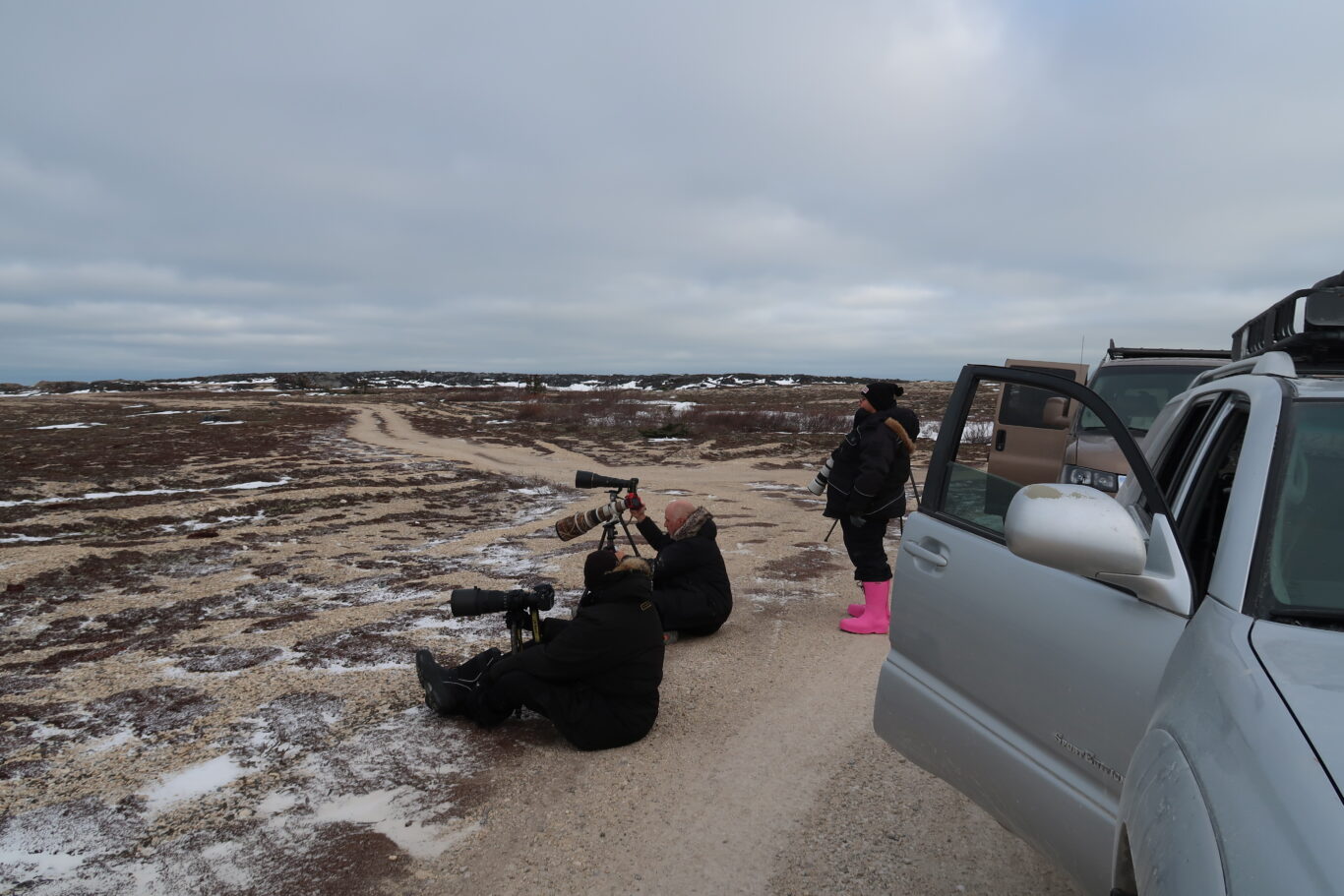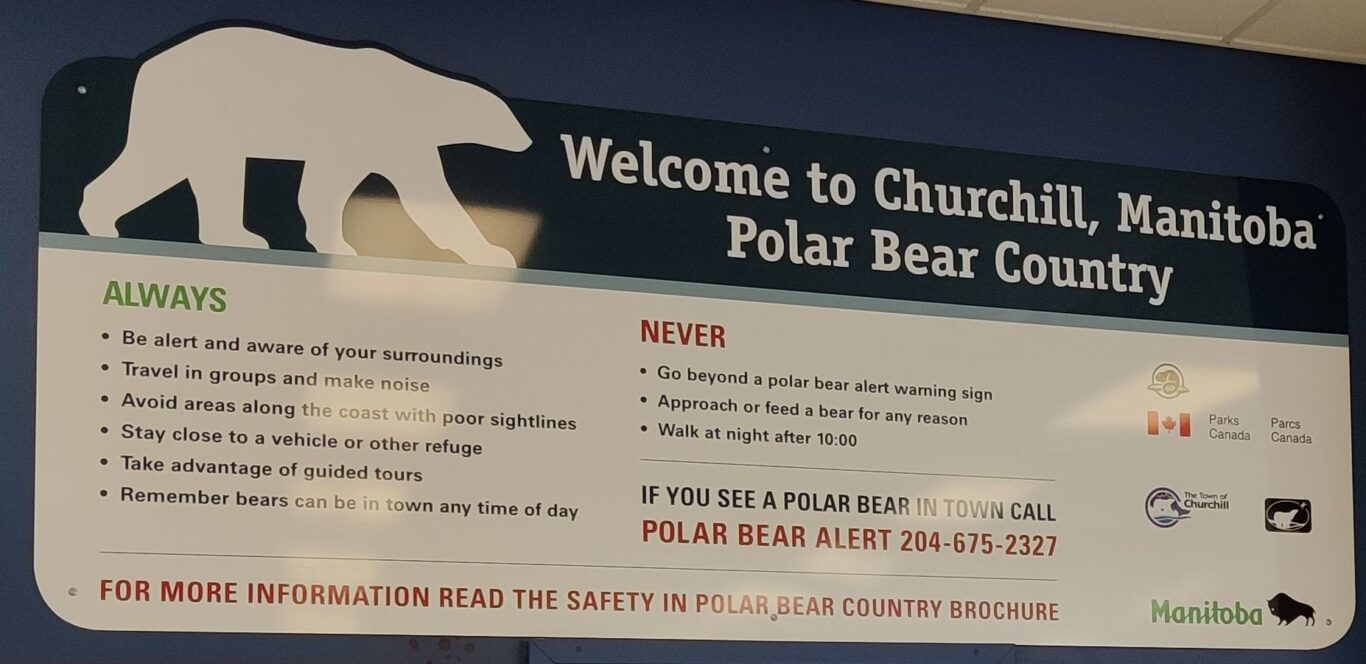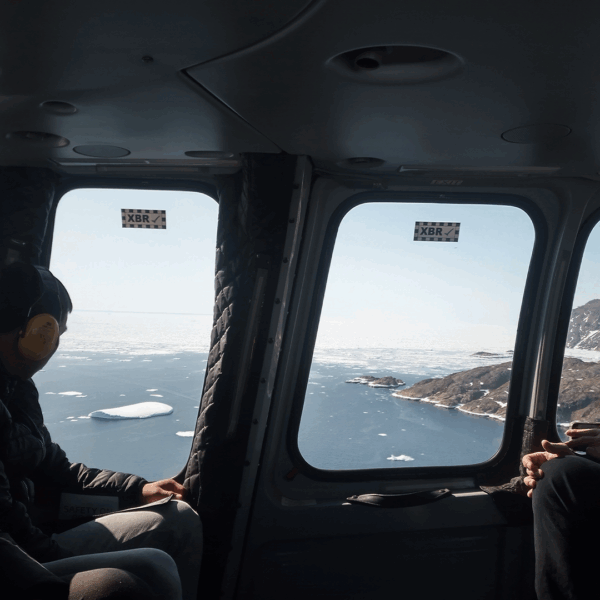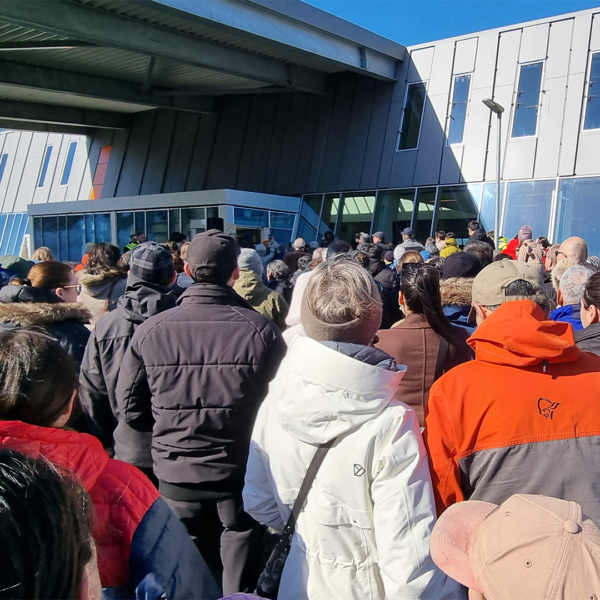“Have You Seen a Polar Bear?” – Transportation During “Bear Season” in Churchill, Manitoba
By Philipp Budka

Tourism is big in Churchill, a town of 870 people situated at the junction of the boreal forest, the Subarctic tundra, and the Hudson Bay in Northern Manitoba, Canada. And tourism is closely entangled with transport infrastructures, such as roads, trails, railway, and airport. Through these infrastructures, tourists are able to reach the town and move around in the community and the nearby area. Tourism operators use these infrastructures to move not only people, but also supplies, equipment, and fuel.
Churchill, however, is not connected to a system of roads. People have to take the train, or the plane to visit the town. But why should tourists take a 48-hour train ride from Manitoba’s capital Winnipeg to Churchill? Why should they pay a considerable amount of money for a charter plane ticket from Edmonton or Calgary? And why should they wait for a cheaper scheduled flight via Winnipeg? The answer is because of polar bears (Ursus maritimus), the animals that became an icon of climate change.
One of the world’s largest polar bear populations is waiting every fall, between October and November, in the surroundings of the town for the Hudson Bay to freeze over. Only then, the bears can start hunting seals on the ice again. This is why Churchill has become known as the “Polar Bear Capital of the World”. In the so called “bear season”, people travel to the town to see, photograph, or film the world’s largest land carnivore in the wild.

In their pursuit of polar bears, tourists and professional photographers alike rely on different transport infrastructures. They come into town via the Hudson Bay Railway, the train station, and the airport. In and around town, a network of roads and trails is used to locate bears. Many visitors take guided tours or safaris with one of the many tourism operators who transport them where the bears are.
Operators offer day tours of different sizes close to town by using a network of trails in the tundra and special vehicles, such as the renowned Tundra Buggy, to transport also larger groups of people. In polar bear season, these trails, which were built by the US and Canadian military after the Second World War, become Churchill’s traffic arteries. Tourists who don’t have time for a one day tour on the ground, book a helicopter flight that guarantees seeing bears.
Roads and trails are not only used by tour operators, but also by individuals who rent cars in town to locate bears on their own – without paying for a guided tour. This has been leading to troubles and conflicts. Some tourists are leaving approved roads and trails, getting their vehicles stuck. Not only destroying delicate tundra this way, but also endangering themselves and those coming for their rescue. Other tourists, who are not capable of locating bears themselves, simply follow the guided tours, increasing traffic, scaring off wildlife, and enraging local tour operators.
For bigger budgets, operators also offer polar bear safaris, lasting a couple of days for instance in the territory of Nunavut, several hundred kilometers north of Churchill. Tourists stay in camps that are usually serviced through the Churchill airport and by short take-off and landing aircrafts.



Tourism and in particular the bear season have been changing economic possibilities in a town that used to rely on its railway connected seaport and the military for creating jobs. Churchill has been successfully attempting to extend tourism season to winter and summer, when there are no bears, but northern lights and beluga wales. Some tourism operators, on the other hand, are rather skeptical. Concerns have been raised that tourism has become too big for this small town and its unique ecosystem. Therefore, there are plans by some tour operators to skip the 2023 bear season to give the polar bears and the tundra a break.
The feeling that wildlife needs a break is not only because of the again – after the quieter COVID-19 years – growing tourism, but also because of a huge construction site east of town. At this site gravel has been produced for repairing and renovating the track bed of the Hudson Bay Railway by blowing up rocks at the Hudson Bay’s shore. These activities, which are supposed to last till spring 2023, are a main source of stress for local wildlife according to some tour operators. Some town representatives, on the other hand, argue that this is necessary to sustain the town, its transport infrastructure, and its tourism industry.
There are several links and connections between tourism and transport infrastructures in Churchill. Polar bear tourism wouldn’t be possible without transport infrastructures, such as the railway, the airport, or the network of trails in the tundra. On the other hand, polar bear tourism has become a major economic factor for maintaining and expanding transport infrastructures. Thus sustaining transportation for local residents also outside of bear season. Nevertheless, there have been and there will continue to be diverging views and opinions on how this relationship between tourism and transportation should be shaped and developed, for instance in terms of scale and intensity.







Please login to post a comment...